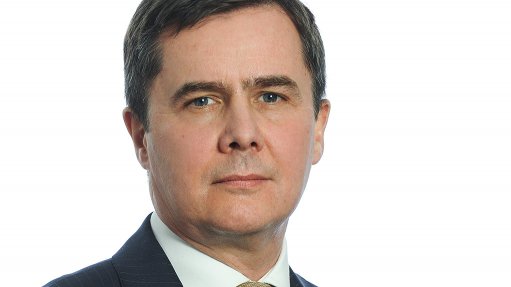
World Gold Council's John Mulligan
JOHANNESBURG (miningweekly.com) – The launch in Singapore of the exchange-traded gold kilobar contract is expected to spark new demand for gold.
World Gold Council (WGC) investor relations manager John Mulligan, who spoke to Mining Weekly Online from London, says the launch is an example of the way that markets in South-East Asia in particular are moving quickly to become more efficient, establish their own supply chains and allow gold to be traded in a modern, transparent manner.
Asia’s strong demand for physical gold is the key driver for the implementation of the contract in Singapore, where a gold trading hub is unfolding, helped by the Singapore government, which has scrapped the goods and services tax (GST) on investment precious metal (IPM).
Since the exemption of GST on IPM in October 2012, trade in gold has risen by 94% year-on-year between 2012 and 2013, from S$18-billion to S$35-billion.
The Swiss-based Metalor has just opened a new bullion manufacturing and refining facility in the city-state, where the kilobar gold contract is due to go ‘live’ in September.
The contract will introduce centralised trading and the clearing of physically delivered gold, which is expected to provide a viable price benchmark in the region, at a time when the current price benchmark for gold, the London 'fix', is under scrutiny.
The London fix, which is set by a group of four banks over a teleconference, takes place after Asian markets close, whereas the Singapore kilobar gold contract will be transparently traded and cleared in Asian time on the Singapore Exchange, which will act as a central counterparty.
The 25 kilobar contract to be offered will give physical gold users access to competitively priced kilobars during three hours of morning trade in Asian time, prior to the opening of the London market.
Between 60% and 70% of gold that flows into South-East Asia is in kilobar form and using this as a standardised unit provides trading certainty to bullion banks, with JP Morgan, Standard Chartered Bank, Standard Merchant Bank (Asia) and the Bank of Nova Scotia the representative institutions.
With a stock and flow of bars guaranteed by the major bullion banks, as well as an exchange open to the key buy-side participants, further gold products are likely to emerge, based on the kilobar contract model.
“Wherever we’ve seen gold made more accessible, we’ve rapidly seen the growth, so we expect something similar,” Mulligan tells Mining Weekly Online.
The launch follows collaboration between International Enterprise Singapore, a government agency, Singapore Bullion Market Association, made up of 27 gold industry corporates, and the Singapore Exchange, where 40% of the listings are foreign.
“There is an appetite for local price discovery and once we have this product traded, we will undoubtedly see local reference points,” Mulligan adds.
The global gold market is continuing to shift from west to east and the WGC believes that the kilobar innovation – which is set to create greater liquidity – will lay the foundation for further development of the gold market throughout South-East Asia.